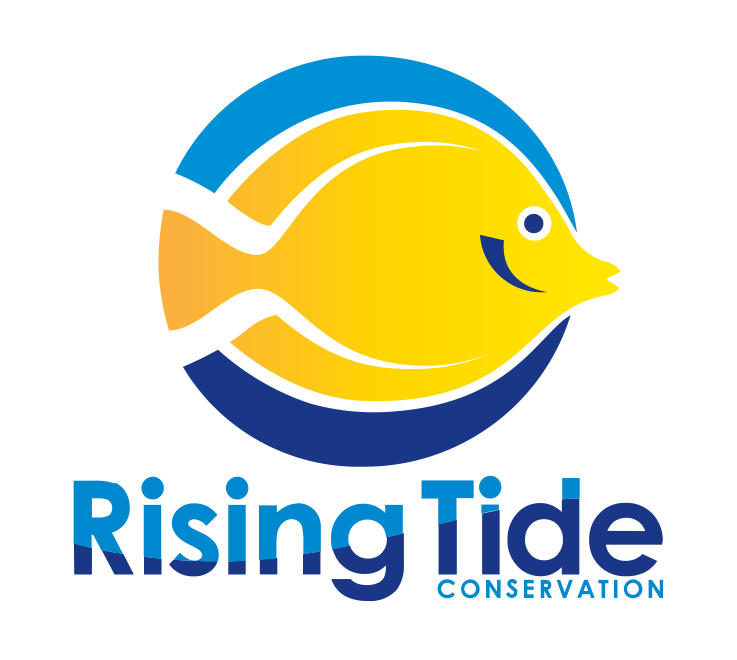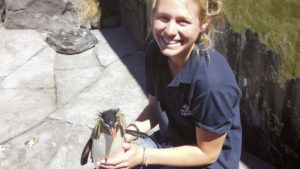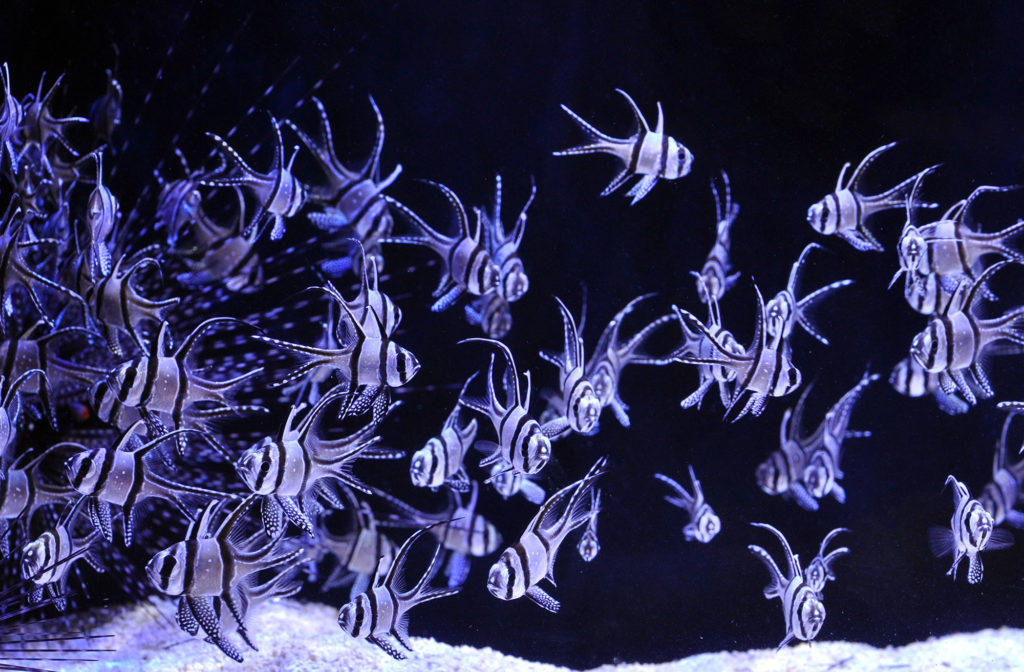
Leave Them Wild: The Importance of Choosing Aquacultured Banggai Cardinalfish, Pterapogon kauderni.
The future of the marine aquarium industry relies in part on the shift to sustainable sourcing of marine life. Marine ornamental aquaculture is a sustainable source alternative to wild collection.* In some cases, aquacultured fish can completely meet the commercial demand for a species, eliminating the need to collect from wild populations. One example of this is the Banggai cardinalfish, Pterapogon kauderni, which is currently listed as Endangered by the IUCN Redlist and Threatened under the Endangered Species Act. However, even though the number of aquacultured Banggai cardinalfish available can meet U.S. market demands, wild-caught Banggai are still being bought and sold.
Wild populations of Banggai cardinalfish and the habitats they rely on are being threatened, and our choices can reduce some of these impacts. Rising Tide Conservation and its partners are encouraging the aquarium industry to join us in committing to only choosing aquacultured Banggai cardinalfish.
*Aquaculture is just one part of making the industry more sustainable, not the only way. Rising Tide Conservation supports verified sustainable initiatives, including the regulated and transparent wild collection of certain species.
Ecology
The Banggai cardinalfish is endemic to the Banggai Archipelago in eastern Indonesia, and has an exceptionally restricted range, occupying only about 30 km² (~11.5 miles²) of shallow water habitat. They can be found at depths less than 6 meters (18 feet) in coral reefs and seagrass beds and are associated with urchins and anemones, which they use for protection. Banggai cardinalfish typically form groups of 25 individuals but up to 500 have been observed, swimming slowly with sporadic, abrupt changes in direction. Their limited range, schooling and swimming behaviors make them easy to collect and overfish.
Banggai, like other cardinalfish, are paternal mouthbrooders, which means that after mating the male holds and incubate the fertilized eggs in his mouth. The egg mass averages 40 eggs and it takes approximately 20 days for the larvae to develop. After the larvae hatch, they remain in the male’s mouth for up to 10 additional days and leave as juveniles, fully independent, miniature versions of the adults. During the incubation and development phases, the mouth-brooding Banggai is reclusive and does not eat. This form of parental care is advantageous because it protects the offspring during their most vulnerable phases, ultimately increasing the likeliness the juveniles will reach adulthood and reproduce themselves.
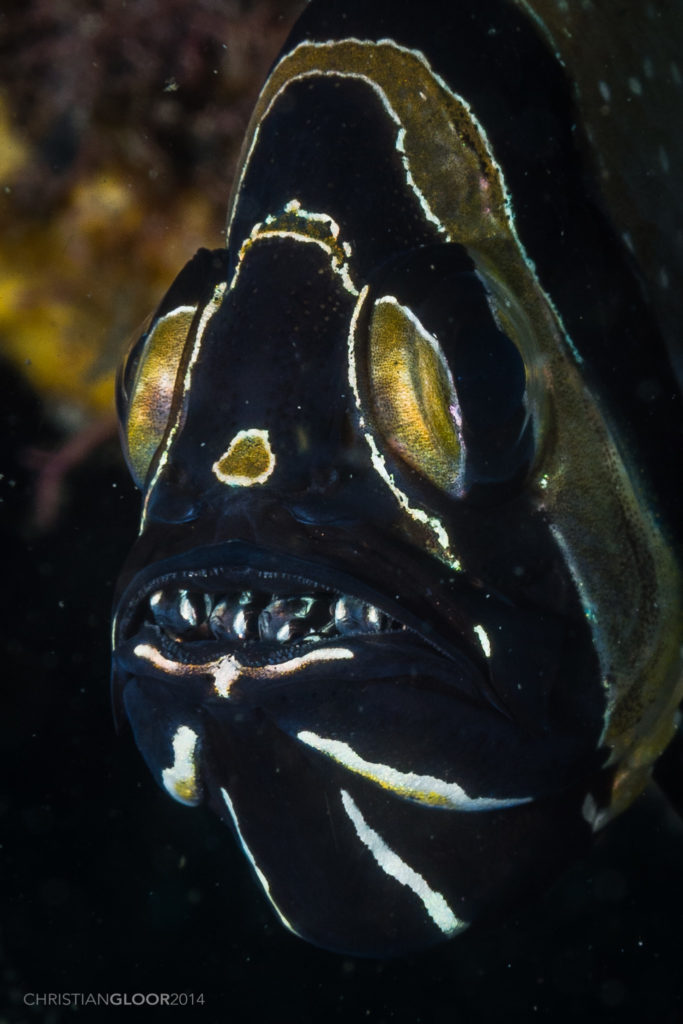
Conservation Status
First introduced to the aquarium industry in the mid-1990’s, wild collection of the Banggai cardinalfish was greatest between 2008-2011. During that time, Banggai were ranked as the 8th most imported marine aquarium fish. At its peak in 2008, around 150,000 wild collected fish were being imported to the U.S. per year. That may not seem like a lot of fish when you consider the whole ocean, but it can make a difference for a species like the Banggai, whose entire wild population was estimated to be only 2.4 million individuals in 2004!
A review was led by the National Marine Fisheries Service for listing under the Endangered Species Act in 2014. The Banggai cardinalfish was listed as Threatened in 2016, the first marine aquarium fish listed under the Endangered Species Act.
The Endangered Species Act Status Review Report in 2015 found that data on the population trends of the Banggai cardinalfish was limited. This is the case with many marine fish species. The first known Banggai population survey was in 2001, seven years after the Banggai cardinalfish was introduced to the aquarium industry, so historical population levels are only estimations. While seven population surveys were conducted between 2001-2015, each varied in area coverage. There was some overlap in areas surveyed, so population assessments were based on density changes over time at these sites. The population estimate in 2004, which included the entire Banggai Archipelago, found “…the total population size was estimated at 2.4 million and a mean density of 0.07 fishes per m²… In 2015, mean density of all surveyed sites was 0.06 fish per m² for all sites (n =52), and the total estimated abundance was 1.4 million. Of the 31 sites surveyed in 2007 and revisited in 2015, three had higher abundance, 13 had similar but low abundance, and 15 had lower abundance.”
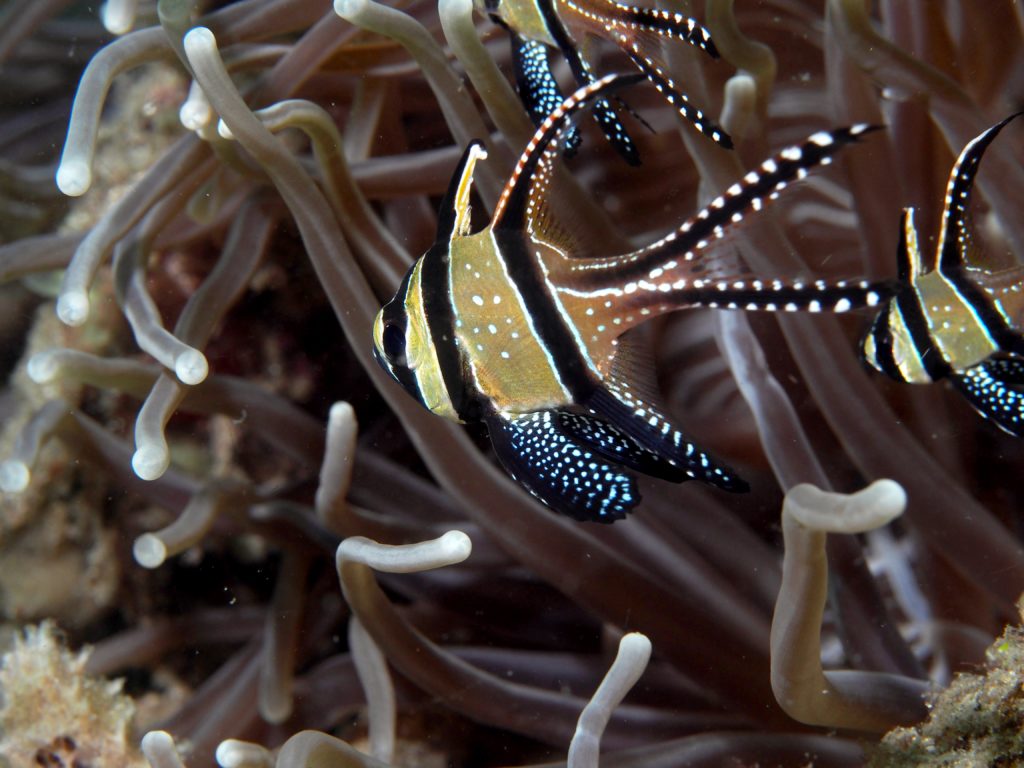
Wild Banggai cardinalfish have been impacted by more than just collection for the aquarium industry. They also face habitat loss and degradation, pollution, and decreased abundance of associated urchins and anemones. The Banggai’s already restricted habitat makes it especially vulnerable to environmental impacts from climate change. While the threats to the wild Banggai cardinalfish and their habitats are great and varied, reef fish are resilient. Reducing collection of Banggai to or near zero would give them a better opportunity to adapt and respond to the other pressures they face in the wild.
Aquaculture
Aquaculture of the Banggai cardinalfish began in the late-1990s. The practice went through ups and downs but grew to a consistent commercial scale in 2012. Banggai cardinalfish will reproduce in aquariums, and there are resources for hobbyists and professionals alike to successfully aquaculture them. The Endangered Species Act Draft Status Review Report for the Banggai cardinalfish found that, “[i]n 2013, approximately 120,000 aquacultured Banggai cardinalfish were imported into the United States. The volume represents a significant portion of overall United States imports of the cardinalfish and may even exceed the number of wild fish currently imported.” The current U.S. demand for the Banggai can be met through aquaculture, yet wild collected fish are still being aquired by hobbyists and public aquaria. This demand may be due to factors such as lack of knowledge about the status of wild Banggai and that wild-caught can be larger and less expensive than aquacultured alternatives.
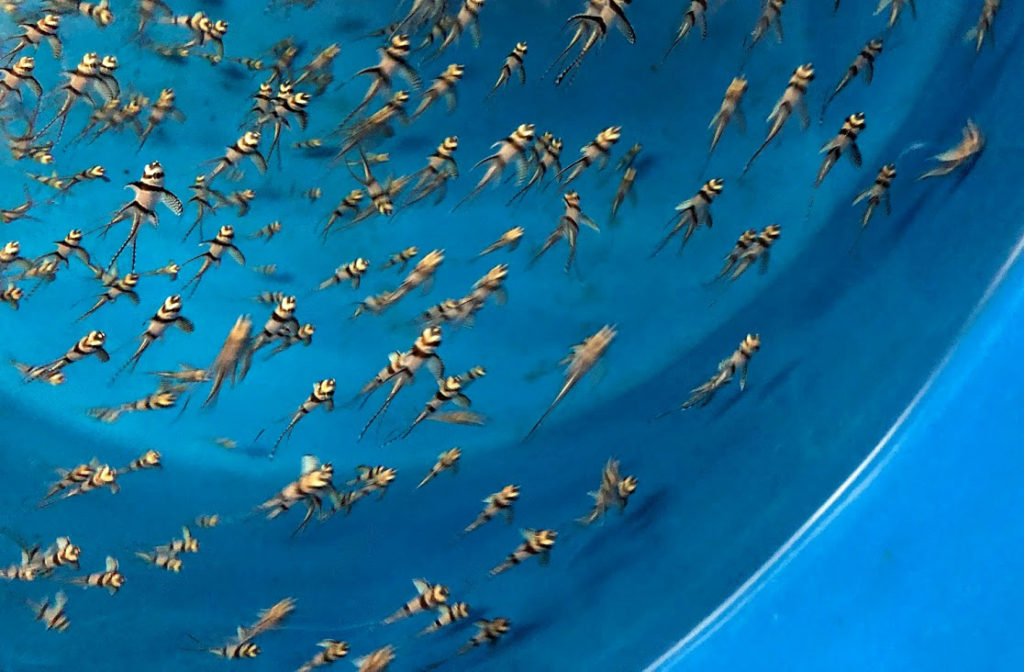
Join Us!
Rising Tide Conservation is dedicated to developing and promoting aquaculture of marine ornamental fish species through collaborative efforts in order to reduce the impacts of wild fish collection on fish populations and the coral reefs where they live. Rising Tide Conservation is proud to have partners like Quality Marine*, Segrest Farms*, and Petco* who fully support the trade of aquacultured Banggai cardinalfish in the U.S. aquarium industry. Quality Marine was one of the first wholesalers to import aquacultured Banggai cardinalfish and has only offered aquacultured Banggai cardinalfish since 2011. These fish can be purchased at retailers across the United States, like Petco, which only offers aquacultured Banggai cardinalfish in all of their stores. Segrest Farms has also only offered aquacultured Banggai since 2011. In leading by example, we hope that these efforts inspire all hobbyists, wholesalers, retailers, and public aquaria to only choose aquacultured Banggai cardinalfish.
*Quality Marine, Segrest Farms, and Petco are financial supporters Rising Tide Conservation. The Rising Tide Conservation board has three board members that are affiliated with the respective companies.
A Rising Tide lifts all boats, and together we can reduce the impacts on wild Banggai cardinalfish!
Resources
- Adams, Jake. “Banggai Cardinalfish Becomes the First Saltwater Fish Listed under Endangered Species Act.” Reef Builders | The Reef and Marine Aquarium Blog, 20 Jan. 2016.
- Allen, G.R & Donaldson, T.J. 2007. Pterapogon kauderni. The IUCN Red List of Threatened Species 2007: e.T63572A12692964.
- Conant, Therese A. “Endangered Species Act Draft Status Review Report: Banggai Cardinalfish, Pterapogon Kauderni.” (Aug. 2014)
- Conant, Therese A. “Endangered Species Act Status Review Report: Banggai Cardinalfish, Pterapogon kauderni.”(2015).
- Marini, F. C. “My notes and observations on raising and breeding the Banggai cardinalfish.” The Journal of MaquaCulture 4.4 (1996): 1-5.
- NOAA Fisheries, Office of Protected Resources. “Listing the Banggai Cardinalfish Under the Endangered Species Act.” Feb. 2016.
- Talbot, Ret, et al. Banggai Cardinalfish: A Guide to Captive Care, Breeding, & Natural History. Reef to Rainforest Media, LLC, 2013.
- Talbot, Ret. “Banggai Cardinalfish to Be Listed Under Endangered Species Act.” Good Catch Blog, 19 Jan. 2016
- Talbot, Ret, et al. Banggai Rescue: Adventures in Bringing Pterapogon Kauderni Back from the Brink. The BANGGAI Cardinalfish RESCUE Project | Reef to Rainforest Media, LLC.
- Vagelli, Alejandro. “The reproductive biology and early ontogeny of the mouthbrooding Banggai cardinalfish, Pterapogon kauderni (Perciformes, Apogonidae).” Environmental Biology of Fishes 56.1-2 (1999): 79-92.
